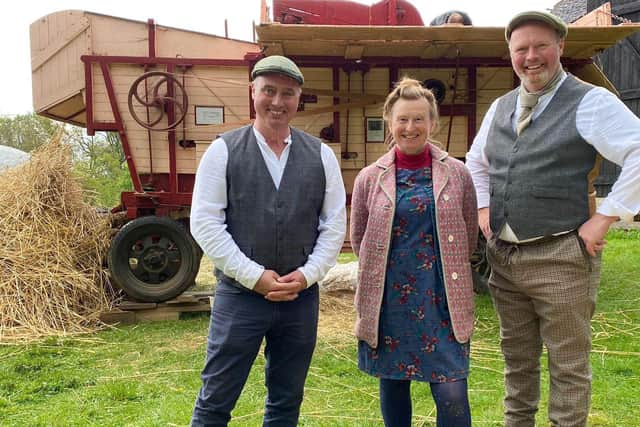More historical trips in A Farm Through Time
and live on Freeview channel 276
They’ve already done the Second World War and the Victorian era, but those feel positively futuristic compared to the Iron Age, which is where they’ll be sowing and growing this week.
Remember last week’s labour-saving Victorian innovations such as the reaper binder and the controversial threshing machine? Those machines, which seem quaintly obsolete by today’s standards, may as well be science fiction at Butser Ancient Farm in Hampshire.
Advertisement
Hide AdAdvertisement
Hide AdHowever, the advancements made during the Iron Age were actually comparatively greater.


Prior to 750BC tools were fragile and inefficient, requiring more time and effort for a lower yield, as well as breaking more often. By 750BC, however, ancient Britons were extracting iron ore from the ground in meaningful quantities and putting it to good use – smelting the metal and using it to craft tools, among other items.
Blacksmith Thomas Timbrell gives Rob and Dave a lesson in Iron Age tool-making. The brothers forge a sickle, one of the most vital farming tools of the ancient world, which they then test out by harvesting nettles to make nettle tea under Ruth’s guidance.
Keen to find out more about the earlier days of farming, Rob and Dave meet Sally-Ann Spence and try out an Iron Age plough pulled by ancient Dexter cattle.
Advertisement
Hide AdAdvertisement
Hide AdThey learn how the new iron plough tip increased productivity, before Ruth gives them a lesson in milling ancient grains by hand. Then, back at their own Cannon Hall Farm, the brothers introduce Ruth to their ancient breed of Soay sheep.
Thanks to strong and durable metal blades for cutting crops, tilling earth, digging roots, shearing sheep and more, Iron Age farming was able to become more intensive. It seems basic to us now, but at the time it was utterly revolutionary.
Before long, the surplus quantities of wheat and wool were being sold overseas, as valuable trading commodities. This in turn caught the attentions of the Romans, who saw how productive our land was, and decided to invade.
Victims of our own success, perhaps, although Rome brought with it new foods and crops, as well as animals – much of their influence can still be felt today.
Advertisement
Hide AdAdvertisement
Hide AdRuth highlights 50 of the foods that the Romans brought to our shores, before Rob and Dave cook some of the produce up into an Iron Age meal under the guidance of food historian Caroline Nicolay.
Finally, after spending the night in a roundhouse that’s typical of the era, it’s time for a celebration to mark the feast of Beltane. This time it’s a modern-day celebration for the farmers, but the feast itself goes back centuries. Beltane historically coincided with May Day and was a way of celebrating the coming summer – marking the end of darkness and the beginning of a long, fruitful time of light and growth. Not unlike the Iron Age itself.